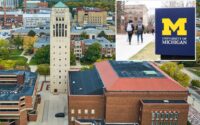Maui resident calls tourists taking photos after wildfires
A Maui native is blasting tourists for taking trips to the vacation hot spot — snapping photos and snorkeling — as crews still work to recover bodies from the wildfires that ravaged historic Lahaina.
Courtney Lazo, whose family has lived on Maui for 10 generations, said the swift return of vacationers to the beachtown resort has interrupted a time of grieving, with 100 people declared dead so far and hundreds more still missing.
“You have tourists taking pictures of the destruction in Lahaina while there’s still bodies there. They’re snorkeling off the waters while they’re pulling people out of the water,” Lazo told ABC News.
“It’s just extremely frustrating, and it feels like a slap in the face,” she said.
Lazo’s fed-up family has placed a sign on the road to Lahaina that reads: “Tourist Keep Out.”

Her uncle, Vance Dizon — who survived the fires — set up a chair on the edge of the neighborhood to create an unofficial checkpoint to try to discourage tourists from exploring their devastated hometown.
“In this time, it’s kind of hard to accept people where, you know, our resources is short,” Dizon said.
While the wildfire tragedy have deepened some residents’ long-standing bitterness toward tourists, Hawaii officials are urging visitors to return to certain areas to boost the economy and recovery efforts.

Hawaii Gov. Josh Green has encouraged travelers to come back, although he said they should refrain from traveling to West Maui, including Lahaina, Nāpili, Kāʻanapali and Kapalua.
“No one can travel to West Maui right now,” Green said in a statement. “We will share when that is possible again. Only returning residents and authorized emergency relief workers should come here now. But all of the other areas of Maui… and the rest of Hawaii are safe,” Green said in a statement.
“When you come, you will support our local economy and help speed the recovery of the people that are suffering right now.”

While businesses across Maui have long relied on tourists’ revenue to stay afloat, many locals are still awaiting assistance.
A government poll from May and June found two-thirds of Hawaii’s residents feel their island is “being run for tourists at the expense of local people.”
Tourism is the “economic engine” for Maui, which produces some of the highest room rates and occupancies in the state, pulling in over $20 million annually from hotels, according to the Maui Economic Development Board.

“On one hand [businesses across Maui] have historically been dependent on revenue from tourists and will struggle to stay afloat without planes landing here,” Kaniela Ing, the national director of the Green New Deal Network and a seventh-generation Indigenous Hawaiian from Maui, told Insider.
“On the other hand, there are still thousands of survivors sleeping on cots, in tents, on gym floors, in homes of families who could barely afford to even take care of their own children, and we need the hotel rooms to house them immediately.”
Even as Lazo and her family say they want the tourists to stay away while they grieve, they acknowledge the role tourism plays in keeping the economy afloat.
“We definitely understand the value of tourism. Maui is open. Lahaina is closed, respectfully,” she said.

Lazo and her family say they wish the road into Lahaina was for emergency response vehicles only, preventing tourists from entering.
“Had we not taken things into our own hands who knows how many more people would still be missing,” Lazo said. “We had our own people going into the impacted areas, finding bodies and people who barely had a pulse. Why are we the ones doing this?”
According to Lazo, Lahaina locals have come up with a new saying ever since the wildfires devastated the region: “Maui, we know who helped, who didn’t, and who got in our way.”


